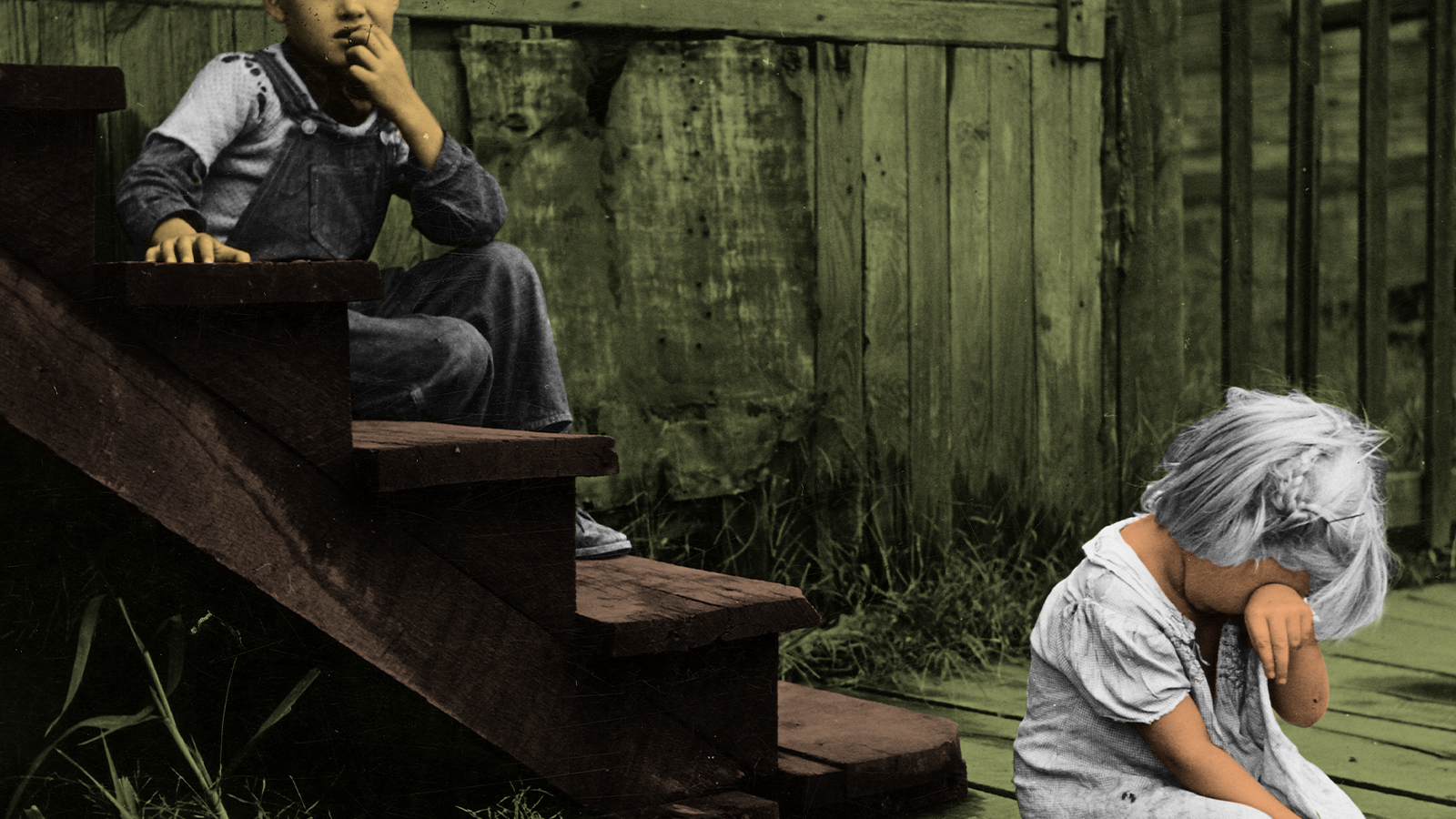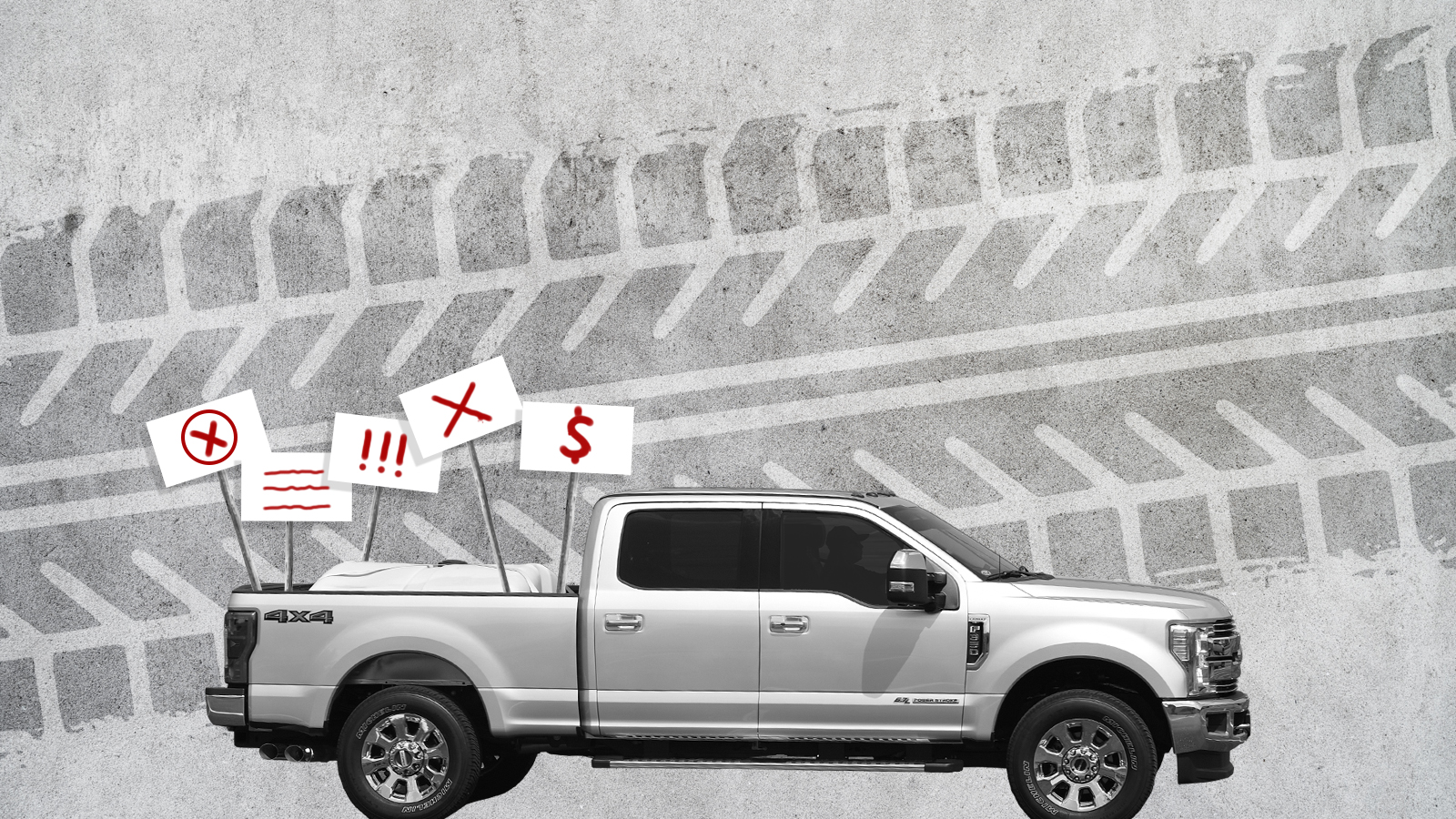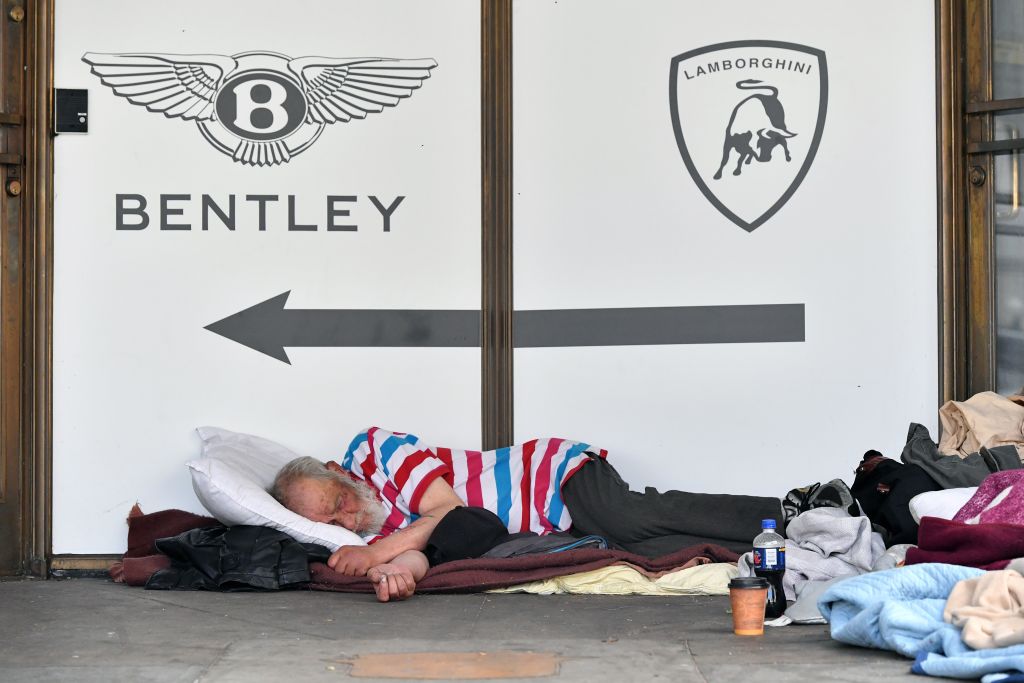How the U.S. slashed child poverty — and why that good news may be fleeting
Need has receded 'on nearly every front,' but experts say there is still cause for concern


If there is a war on child poverty, the U.S. is finally winning.
"The U.S. has not solved poverty," of course, David Leonhardt writes at The New York Times, but lots of people, including policy experts, were surprised by Census data released last week that showed just how far child poverty rates have fallen since the 1990s. "I'll confess that I was — and I have been covering economics for much of the past two decades," Leonhardt adds.
Here's a look at how the U.S. managed to cut child poverty so sharply, and whether we can keep the numbers this low:
The Week
Escape your echo chamber. Get the facts behind the news, plus analysis from multiple perspectives.

Sign up for The Week's Free Newsletters
From our morning news briefing to a weekly Good News Newsletter, get the best of The Week delivered directly to your inbox.
From our morning news briefing to a weekly Good News Newsletter, get the best of The Week delivered directly to your inbox.
How far has the child poverty rate fallen?
The U.S. Census Bureau reported Sept. 13 that the official child poverty rate was 15.3 percent, only slightly lower than in 2020, but using the more accurate Supplemental Poverty Measure (SPM), the child poverty rate dropped 46 percent in 2021, to a record-low 5.2 percent from 9.7 percent in 2020 and 17 percent in 2009, the first year the Census Bureau included the SPM data.
Two days before the Census Bureau report, The New York Times and the nonpartisan research group Child Trends examined the data going back to 1993, when 28 percent of children were below the poverty line, using the SPM rate. Child Trends "relied on the data the Census Bureau uses to calculate poverty rates but examined it over more years and in greater demographic detail," the Times reports.
This "comprehensive new analysis shows that child poverty has fallen 59 percent since 1993, with need receding on nearly every front," the Times summarizes. "Child poverty has fallen in every state, and it has fallen by about the same degree among children who are white, Black, Hispanic, and Asian, living with one parent or two, and in native or immigrant households. Deep poverty, a form of especially severe deprivation, has fallen nearly as much."
"This decline in child poverty is very significant. I cannot say it enough," Brandeis University poverty expert Dolores Acevedo-Garcia tells the Times. "If we still had the rates as we had in the 1990s, there would be 12 million more children in poverty."
A free daily email with the biggest news stories of the day – and the best features from TheWeek.com
What is SPM, and what does it measure?
"The official poverty measure includes only pretax money income," the Census Bureau explains. The weighted average threshold for living in poverty in 2021 was $27,740 for a family of four.
"The SPM extends the official poverty measure by taking into account many of the government programs designed to assist low-income families and individuals that are not included in the current official poverty measure, such as the Supplemental Nutrition Assistance Program (SNAP), as well as stimulus payments" and tax credits, minus "expenses for critical goods and services" like child care and medical expenses," the Census Bureau says. "The SPM provides an alternative way of measuring poverty in the United States and serves as an additional indicator of economic well-being."
The SPM is considered "the yardstick that best accounts for government aid," the Times notes. "While 2009 is the earliest year for which the Census Bureau produced the supplemental measure, researchers at Columbia University calculated it for earlier decades, and Child Trends drew on their data."
How did the U.S. achieve these gains?
Poverty researchers agree that the U.S. has made great strides in reducing child poverty, but they don't agree on how that was achieved.
Right-leaning experts point to the 1996 welfare overhaul law President Bill Clinton signed into law, introducing a work requirement and tightening eligibility for welfare. "Conservatives say the landmark law pushed more parents to work and call it the main reason child poverty declined," the Times reports. They especially highlight the "surge of employment among single mothers, the group most affected by restrictions on cash aid."
"The system sent a message: You can't live on welfare anymore," Heritage Foundation poverty researcher Robert Rector tells the Times. The point is "sending a message that going to work is the path out of poverty," and "that message got through," agreed Robert Doar, president of the American Enterprise Institute (AEI). "If you work, we will help you — Americans like that message." AEI poverty scholar Scott Winship, writing at The Dispatch, argued that the welfare law not only sent parents to work but encouraged marriage, and thus two-parent households.
Progressives dismiss work requirements as just a bureaucratic barrier and "say many working families would still be poor without the expanded safety net, which grew in part to compensate for stagnant wages amid decades of rising inequality," the Times reports. And the Child Trends analysis found that while "multiple forces reduced child poverty" after 1993, "a dominant factor was the expansion of government aid."
In 1993, safety net programs cut child poverty by 9 percent from what it would have been absent government aid, Child Trends found. By 2019, child poverty was 44 percent lower because of the safety nets. "This is an astounding decline in child poverty," said study co-author Dana Thomson. "Its magnitude is unequaled in the history of poverty measurement, and the single largest explanation is the growth of the safety net."
The Child Trends report tried to quantify the poverty reduction from each program and some social factors — the decline in teen births "was associated with 52 percent of the total decline in child deep poverty" from 1993 to 2019, for example, and the combination of lower unemployment, increased labor participation of single mothers, and increased minimum wages "explained about 33 percent of the decline in child poverty."
The final plummet in child poverty in 2021 has a simpler explanation: the expanded Child Tax Credit, which provided most families with children under 18 up to $300 per month in the last six months of 2021. "In the absence of the expansion, child poverty would have fallen to 8.1 percent, rather than 5.2 percent, and some 2.1 million more children would have lived in families with incomes below the poverty line," writes Sharon Parrott at the Center on Budget and Policy Priorities, citing the Census data.
What's closer to the truth: Safety net or work requirements?
Well, "the 1996 welfare law turned out to be a case study of different political ideologies combining to produce a result that was better than either side would likely have produced on its own," Leonhardt argues in his Times newsletter. "Poor single mothers (the main beneficiaries of welfare) were better able to find and hold jobs than many liberals expected," and that helped cut child poverty, "but the biggest cause was an expansion of government aid. And progressives were the main force behind this expansion," though Republicans supported some measures.
The safety net became "at once became more stringent and more generous" in the 1990s, the Times explains. Now it's "a patchwork of programs shaped by a century of political conflict and compromise" that "bears the imprint of both parties and commands the satisfaction of neither."
"The quarter century of declining child poverty from 1993 to 2019 is a fantastic success story," the Child Trends analysis summarizes, "but it is a nuanced story with caveats."
Does it matter who's right about the path to fewer poor children?
If policymakers learn the wrong lessons about the reduction in poverty, that could hamper efforts to keep those numbers low or reduce them further. And analysts from different ideological sides do worry about this.
The Child Trends analysis, by focusing on the virtues of the safety net, "bolsters a counterproductive progressive framing around anti-poverty policy," AEI's Winship argues. "But the increase in private income is, by far, the most important driver of increases in the well-being of single parents. To neglect this is to downplay the importance of economic growth and human capital investment in poverty reduction, and the crucial role of work incentives within anti-poverty programs."
The data actually "undercut conservative arguments that such government help must be accompanied with work requirements, lest it incentivize recipients to slip into a 'hammock' of 'dependency,' as one wretched formulation of the idea has it," Paul Waldman and Greg Sargent write at The Washington Post.
"There was a huge decline in child poverty and a very large increase in parents working year round without any work requirements," Arloc Sherman at the Center on Budget and Policy Priorities told the Post. "We did not need to require the parents to work."
But at the same time, the story of the safety net "is a story of safety nets — multiple programs with multiple aims, sometimes evolving in uncoordinated or accidental ways," the Times reports. "each program expanded in its own way — some by congressional intent (tax credits) and others by demographic change (Social Security) or court order (Supplemental Security Income, which provides disability aid). A primary goal was to help low-wage workers, but there were also major expansions of programs with few if any work rules (SNAP and school meals)."
"The safety net is often criticized for being a patchwork of programs, but that's also a strength," says Child Trends study co-author Dana Thomson. "It reaches a variety of people in a variety of circumstances."
So can the U.S. maintain these gains?
In the short term, maybe not. "Policy experts say this week's good news may be fleeting," NPR News reports. The poverty reduction numbers "were driven by temporary pandemic-related policies, and without action by policymakers, they could quickly unravel."
The expanded child tax credit, for example, "ended in December, just as inflation was starting to climb to historic highs," NPR adds. "The Biden administration and many Democrats would like to make the expanded child tax credit permanent. The U.S. House passed such a measure but it did not survive in the Senate. Several Republican Senators have proposed more limited ways to expand the child tax credit."
But since the battle against child poverty is so multifaceted, no one policy change can unravel all the gains. And experience has shown policymakers, to some extent at least, what works and what doesn't. "Any of the improvements that we see," says Cornell government professor Jamila Michener, "are a reflection of political choices,"
Peter has worked as a news and culture writer and editor at The Week since the site's launch in 2008. He covers politics, world affairs, religion and cultural currents. His journalism career began as a copy editor at a financial newswire and has included editorial positions at The New York Times Magazine, Facts on File, and Oregon State University.
-
 The rise of the world's first trillionaire
The rise of the world's first trillionairein depth When will it happen, and who will it be?
-
 The surge in child labor
The surge in child laborThe Explainer A growing number of companies in the U.S. are illegally hiring children — and putting them to work in dangerous jobs.
-
 Your new car may be a 'privacy nightmare on wheels'
Your new car may be a 'privacy nightmare on wheels'Speed Read New cars come with helpful bells and whistles, but also cameras, microphones and sensors that are reporting on everything you do
-
 Empty office buildings are blank slates to improve cities
Empty office buildings are blank slates to improve citiesSpeed Read The pandemic kept people home and now city buildings are vacant
-
 Why auto workers are on the brink of striking
Why auto workers are on the brink of strikingSpeed Read As the industry transitions to EVs, union workers ask for a pay raise and a shorter workweek
-
 American wealth disparity by the numbers
American wealth disparity by the numbersThe Explainer The gap between rich and poor continues to widen in the United States
-
 Cheap cars get run off the road
Cheap cars get run off the roadSpeed Read Why automakers are shedding small cars for SUVs, and what that means for buyers
-
 Vietnamese EV maker VinFast wows with staggering Nasdaq debut
Vietnamese EV maker VinFast wows with staggering Nasdaq debutSpeed Read Can the company keep up the pace, or is it running out of gas?



